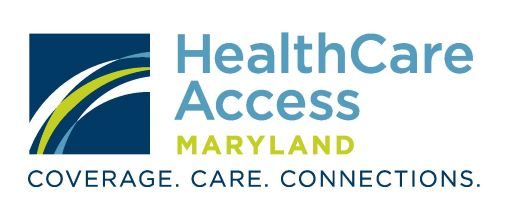November is National Diabetes Month, a time to come together to learn and spread awareness about Diabetes. Understanding what diabetes is, knowing the risk factors, and learning about prevention are critical. With the help of this health awareness month, the hope is to educate communities about all there is to know about diabetes. Dr. Ndidi Obichere, Family Physician and Maryland Primary Care Program, MDPCP Clinical Lead, shared insightful answers to some commonly asked questions related to diabetes. Read below to learn about the different types of diabetes, risk facts, prevention methods, and the resources available.
Can you explain the different types of diabetes?
Diabetes is a chronic health condition that consists of elevated blood sugar. Normally when we consume food, the blood converts it to a form of sugar called glucose. Our pancreas then releases insulin which functions to lower the blood sugar. With diabetes there is either an insulin deficiency or insulin resistance that leads to elevated blood sugar. The three main types of diabetes are Type 1, Type 2 and Gestational Diabetes. Here are descriptions of each:
- Type 1 Diabetes: An autoimmune condition where the pancreas destroys itself. This leads to insulin deficiency and an inability of the pancreas to lower blood sugar. This condition is most common in children. Its onset is usually in childhood and often termed early-onset or juvenile diabetes. Common symptoms are excessive thirst, frequent urination, weight loss, fatigue, blurred vision, numbness, and tingling. About 5% of diabetics are Type 1, therefore it is the least common type of diabetes and is treated with insulin.
- Type 2 Diabetes: An acquired form of diabetes where the body has sufficient insulin but is insulin resistant, and unable to lower blood sugar. It is most common in adults, often acquired later in life and termed late-onset diabetes. However, it is becoming more prevalent in children and adolescents with obesity. It may present with symptoms like Type 1 or without symptoms. It is usually managed with oral meds but can be managed with insulin if very uncontrolled. About 95% of diabetics are Type 2 making it the most common form of diabetes.
- Gestational Diabetes: This is an acquired diabetic condition associated with pregnancy. The mother has no previous history and develops diabetes with pregnancy. It can cause maternal and fetal complications such as gestational hypertension, preeclampsia, cesarean delivery, shoulder dystocia, jaundice, childhood obesity, and infant death. Once the baby is born, the diabetes usually resolves. However, gestational diabetes can increase mom’s risk of developing Type 2 diabetes in the postpartum period.
How do you determine if you are at risk for diabetes?
Determining if you are at risk for diabetes depends on the type. Below are common risk factors for each:
- Type 1: Family History, past medical history of autoimmune conditions, age-childhood and/or teenage years
- Type 2: Poor diet, pre-diabetes, family history, member of at-risk ethnic group; African American, Native American, Hispanic Asian-American, elevated Body Mass Index (BMI) and obesity, age-40 and older, dark patches on skin (acanthosis nigricans), history of gestational diabetes, hypertension and high cholesterol, Polycystic Ovarian Syndrome, sedentary lifestyle
- Gestational Diabetes: Older age- 40 and older, poor diet, increasing pre-pregnancy weight/elevated BMI/obesity, sedentary lifestyle
What are things you can do to prevent your risk of developing diabetes?
- Lose excess weight and/or maintain a healthy weight
- Exercise a minimum of 30 mins/day or 150mins per week of moderate physical activity
- Eat a healthy diet – low in sugar and salt and avoid saturated and trans fats. High in fruits, vegetables, lean meat, and whole grains.
- Keep your stress level down
Someone I know/a loved one of mine has diabetes, how can I help them manage their illness?
If they are managing with diet and exercise, encourage them to eat a diet low in starches and fats and get regular exercise. If they are managing with medications, encourage them to eat healthy, exercise and take their medications regularly. They should be checking their blood sugar per their primary care provider’s instructions. Lastly, they should see their primary care provider regularly, get routine eye and dental exams and they should protect their feet and check regularly for any signs of infection. Uncontrolled diabetes can lead to complications such as blindness, limb amputations, kidney failure, vascular and heart disease.
How important is diet and nutrition to managing diabetes?
Diet and nutrition are crucial in managing diabetes. It is important to consume a diabetic diet which is one that is low in carbohydrates and rich in protein and fiber. This will keep blood sugar controlled and help diabetes medications to work effectively. When eating, it’s important to practice the plate method, an evidence-based method for portion control and adequate consumption of healthy foods. Using the plate method means that when you plate your food, half of your plate should be fruit and/or vegetables, a fourth of your plate should be protein such as a lean meat and the other fourth should be carbohydrates such as rice or bread. For further dietary education and resources, you can review the websites below and/or consult a Nutritionist, who can review the appropriate diet including list of diabetic foods and daily calories to consume based on your nutritional needs.
How often should someone who has diabetes see their doctor?
If they are an uncontrolled diabetic, they should see their primary care provider every three months. If they are a controlled diabetic this can be extended to every six months. Also, it is important to note that diabetes weakens the immune system and patients should also see their provider for vaccines such as flu, COVID-19, pneumococcal and tetatanus, diptheria and pertussis (tdap) if unvaccinated. These infections with concurrent diabetes can be dangerous and lead to severe illness and hospitalization.
What resources are there for individuals living with diabetes?
With the holidays approaching, it’s important to keep active leading up to and after the holiday and practice mindful eating. Consider taking a nice hike in the morning or running or walking a 5K the day after. Practice the plate method when you are ready to feast. This means that when you plate your food, half of your plate should be fruit and/or vegetables, a fourth of your plate should be protein such as a lean meat and other fourth carbohydrates such as rice or bread. If you desire seconds and thirds, remember to repeat this method. Take your time to eat your food and drink plenty of water.
Additional Resources:






